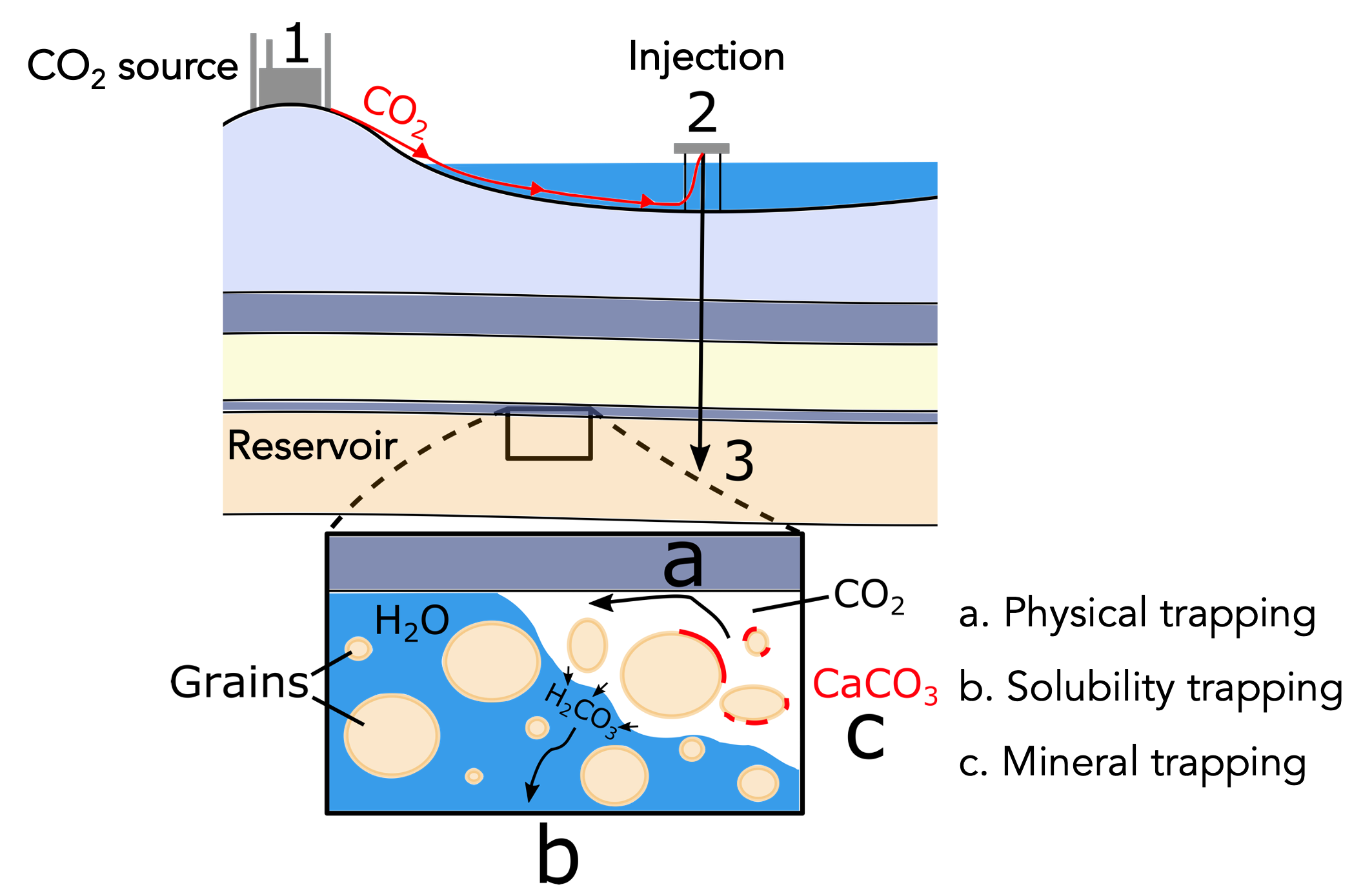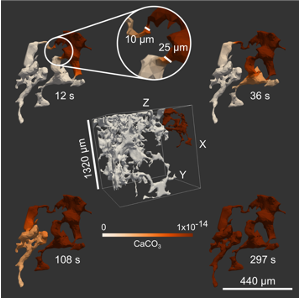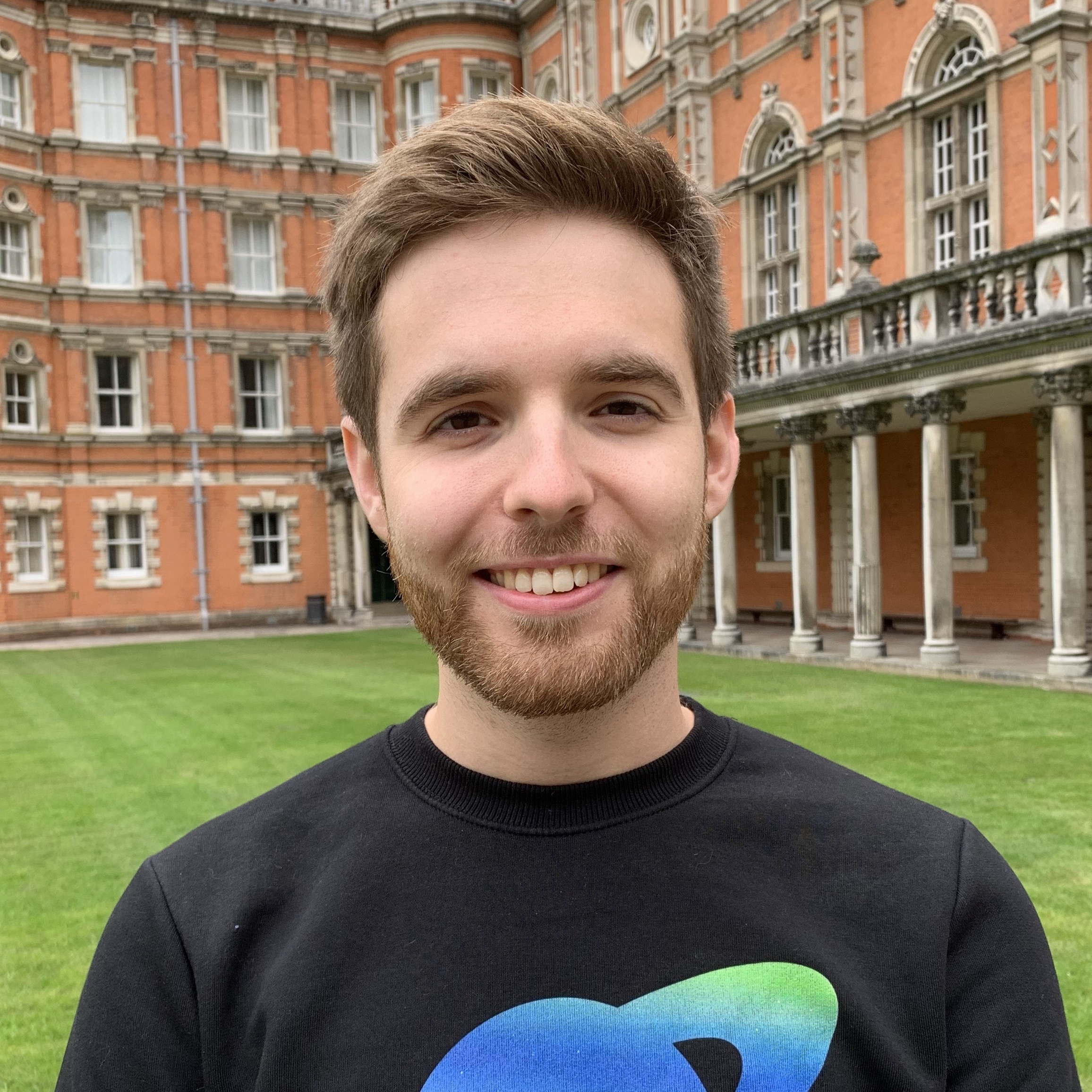Climate change affects many of us today and for the people it doesn’t right now – it certainly will soon. Sadly, I expect the world will be a very different place by the time my generation reach retirement age as opportunities to enjoy our planet gradually vanish. For my PhD project at Royal Holloway, University of London, I wanted to pursue an area of research that has a real chance of changing this trajectory.
 It’s now common knowledge that the excessive amount of carbon dioxide (CO2) in the atmosphere is trapping radiation from the sun, furthering the greenhouse effect and global warming. Carbon capture and storage (CCS) is a process where CO2 is captured, usually from industrial facilities, and isolated from the atmosphere. This CO2 is typically compressed and transferred via pipeline or tanker, over sea or land and then injected into deep geological formations, trapping the gas long-term. CCS technologies show a lot of promise in reducing carbon emissions and potentially enable “negative emissions”, and I am confident they will play a crucial part in meeting global energy and climate goals.
It’s now common knowledge that the excessive amount of carbon dioxide (CO2) in the atmosphere is trapping radiation from the sun, furthering the greenhouse effect and global warming. Carbon capture and storage (CCS) is a process where CO2 is captured, usually from industrial facilities, and isolated from the atmosphere. This CO2 is typically compressed and transferred via pipeline or tanker, over sea or land and then injected into deep geological formations, trapping the gas long-term. CCS technologies show a lot of promise in reducing carbon emissions and potentially enable “negative emissions”, and I am confident they will play a crucial part in meeting global energy and climate goals.
Today the process can prove costly and isn’t yet profitable, meaning it’s not being developed and implemented as rapidly as it needs to be. Only around 35 commercial facilities currently apply CCS to industrial processes, fuel transformation and power generation, storing nearly 45 MT of CO2 per year. However, globally we are emitting at least an estimated 42.5 GT of CO2 per year. We urgently need to increase our adoption of CCS and other technologies of this type to start tackling emissions of this scale.
My research aims to develop a workflow for preliminary pore scale analysis of potential reservoir sandstones to determine if they should be considered for use as carbon storage reservoirs. Given the vast number of potential storage reservoirs globally, a way to quickly assess units at a relatively low cost would be intensely valuable to guide the further investment of time and money. We are hopeful this research is one small push in a series of many others that will increase the worldwide adoption of CCS.
Tracking how carbon moves through rock
First, we took a variety of sandstone core samples from around the UK and the northeast Atlantic for the development of this preliminary pore scale analysis workflow. We chose sandstones from the English Channel, Porcupine Basin, Sellafield in Cumbria and Glasgow in Scotland.
We took a small 5 mm diameter cylindrical core plug from a number of points in each core run and imaged them in 3D using high energy X-rays. Using these images, we performed a variety of different analyses. First, we carried out porosity and permeability analysis. In geology, ‘porosity’ refers to the proportion of empty space within a given volume of rock, space which air or liquid can pass through. ‘Permeability’ is a key geophysical characteristic of a porous material which describes how easily fluid moves through it.
We segmented the 3D image by picking out darker areas representative of pore space, just like picking out bones on an X-ray. We quantified porosity both in total and by what fraction is connected throughout the structure. We ran a simple flow model on the 3D image to calculate a permeability value. In combination with other geophysical property measurements like porosity, we defined a relationship describing critical values at which fluid movement is most effective in sandstones.
We also used a segmented 3D pore structure as a physical modelling domain. We built a model that describes how injected CO2, dissolved into water in the pore space to form carbonic acid, moves through the structure. This solves several partial differential equations (PDEs) over the pore structure domain, describing the processes of fluid advection and diffusion. This also includes the reaction of the carbonic acid with the host rock in the formation, forming solid carbon-bearing minerals. Ultimately, this model helps to demonstrate the way that the geometry of pore structures impacts how carbon moves through a reservoir rock in the subsurface and where carbon-bearing minerals form.
Receiving an Oracle for Research grant gave us the freedom to test our workflows on a range of different hardware configurations. Oracle provided around $20,000 in cloud credits to support the two main strands of the project. We accessed low-latency RDMA connected HPC nodes to run highly parallel numerical flow simulations using in-house developed code.
We also took advantage of substantial GPU resources to accelerate geophysical property calculations through proprietary software packages. With these resources, we cut down our run times significantly, taking mere hours instead of days or sometimes weeks. The support provided by the OCI team also made transitioning from on-premises facilities to the cloud a breeze.
Our results – a new approach to preliminary CCS reservoir rock analysis
Investigating porosity and permeability enabled us to identify a value of the upper percolation threshold. This is the amount of porosity a rock must have to transition from a partially connected network to one that is fully connected. This value was determined to be 14% porosity within the studied sandstone samples.
From the more complex numerical simulation work, we found that the tortuosity of the pore structure has a non-linear negative relationship with the mass of carbon mineralised. There is a critical tortuosity of 2, below which the mass of precipitate produced rapidly increases and above which the mass of precipitate begins to plateau.
 Visual output from this model highlighted narrow pore throats as key limiting factors in fluid migration and consequently, could be hotspots for pore clogging where throat diameter is in the region of 25 μm. We also found that the reactivity of the chemical system is far more influential on the mass of precipitate produced than the amount of available solid reactant.
Visual output from this model highlighted narrow pore throats as key limiting factors in fluid migration and consequently, could be hotspots for pore clogging where throat diameter is in the region of 25 μm. We also found that the reactivity of the chemical system is far more influential on the mass of precipitate produced than the amount of available solid reactant.
Ultimately, this work has shown that a digital approach to pore scale reservoir rock analysis is both viable and effective as a preliminary investigation tool. Criteria can be set to allow decisions to be made on further investigation of a given material. The new constrained criteria from this work show that >14% porosity and a pore network tortuosity of <2 are good indicators of whether further investigation should take place.
Looking to the future of CCS
This project directly benefits the reservoir characterisation, digital image analysis and CCS communities, since the workflow can be applied to a range of subsurface and microstructural characterisation problems. This can be used as a preliminary investigation technique to provide a quick and relatively inexpensive assessment of a reservoir. From here a decision can be made as to whether it should be investigated further for CCS, using more time consuming and expensive techniques.
This workflow should benefit key decision makers, helping to inform where carbon could be stored around the world. In the longer term, we hope everyone in the world will benefit from the implementation of more CCS projects, reducing the amount of carbon being emitted and helping in the fight against anthropogenic climate change
~
Oracle for Research offers products, capabilities, and resources purpose-built for research to simplify the research process and accelerate discovery around humanities’ most urgent needs. Through our research-first, partner-centric approach, we make computing paradigms more powerful and user-friendly, data easy and accessible, and community resources invaluable and actionable. We help researchers in academic, commercial, and federal settings, across all research disciplines, explore novel ways to achieve ground-breaking results to make the world a better place.
